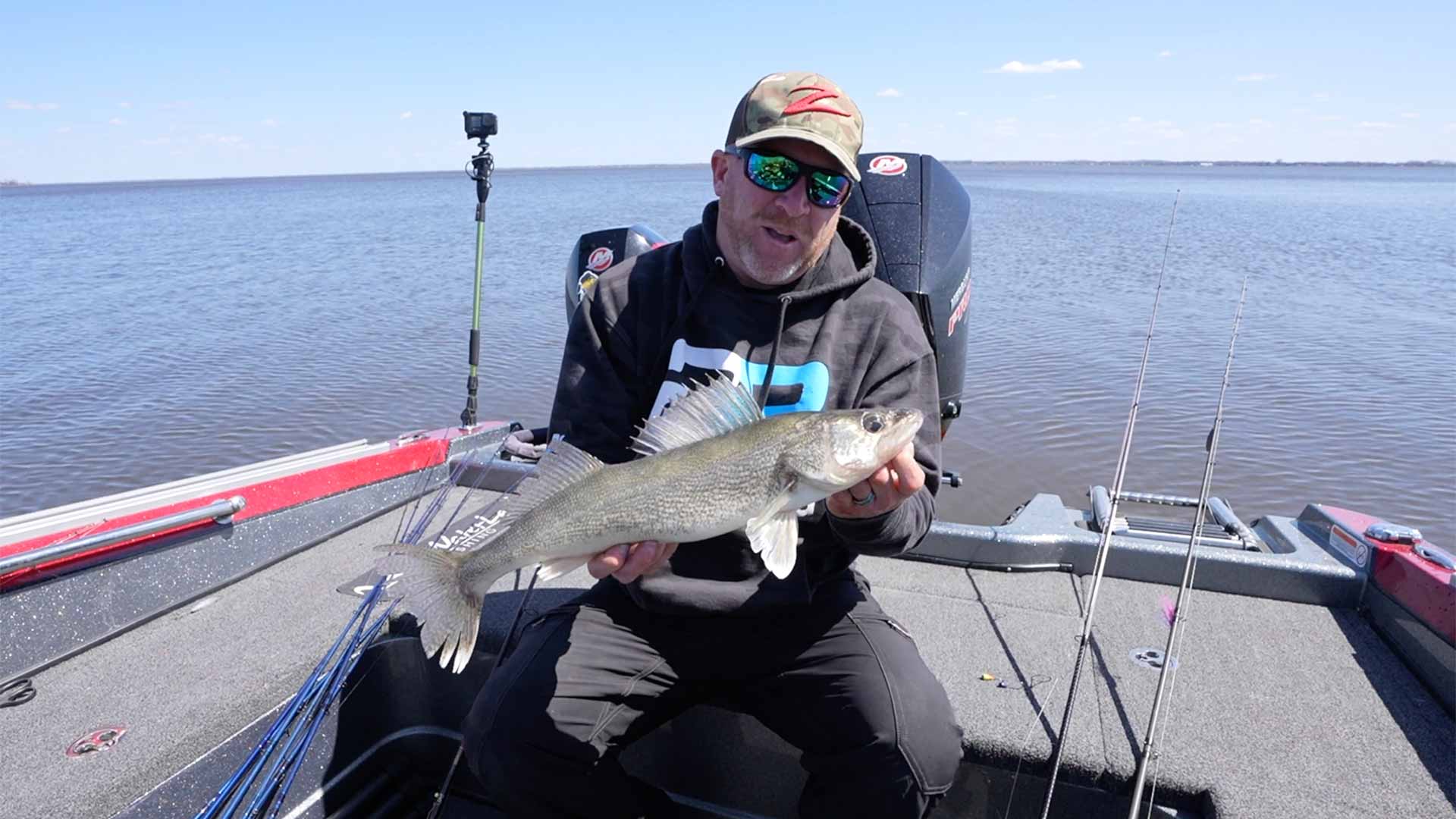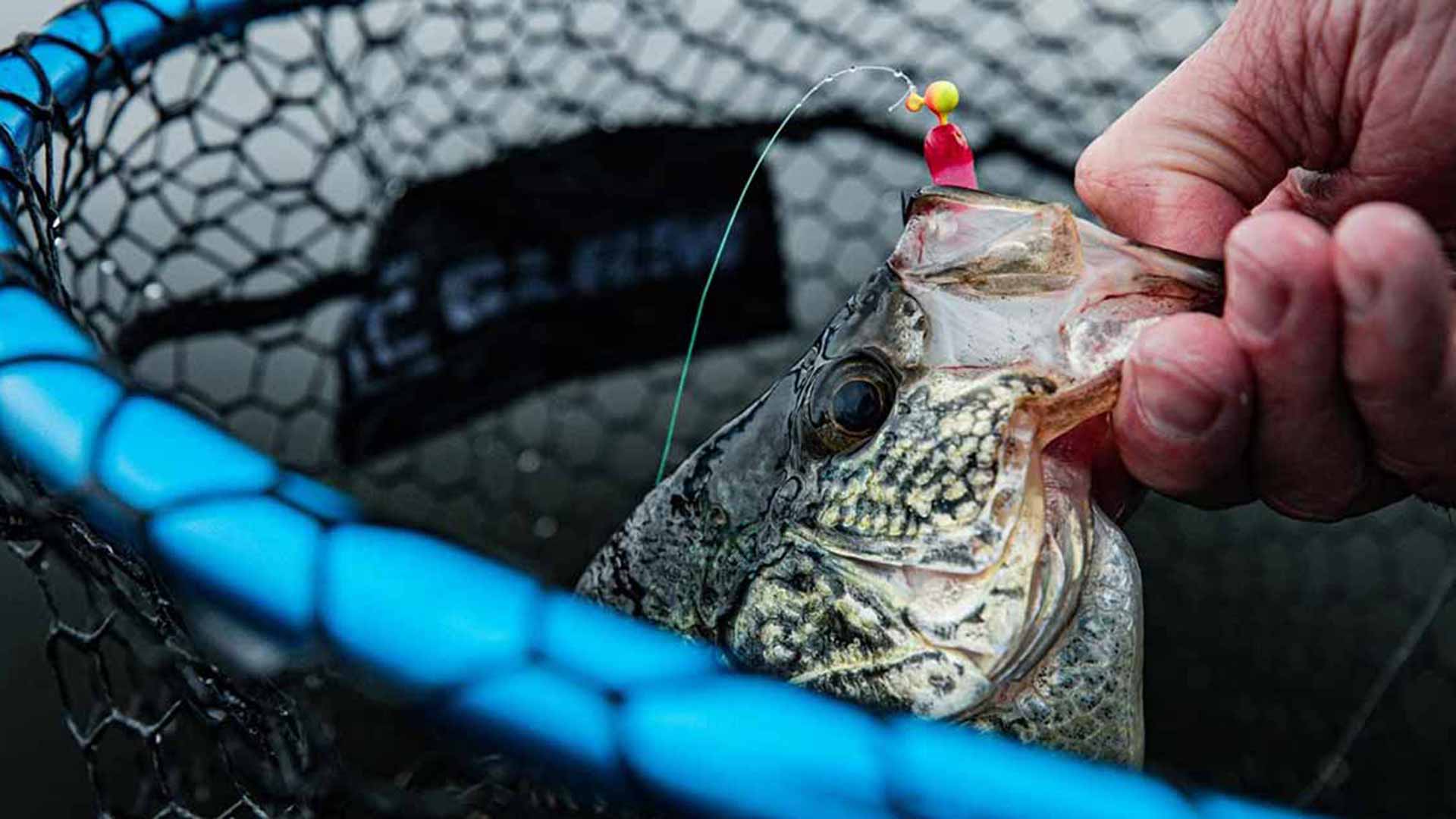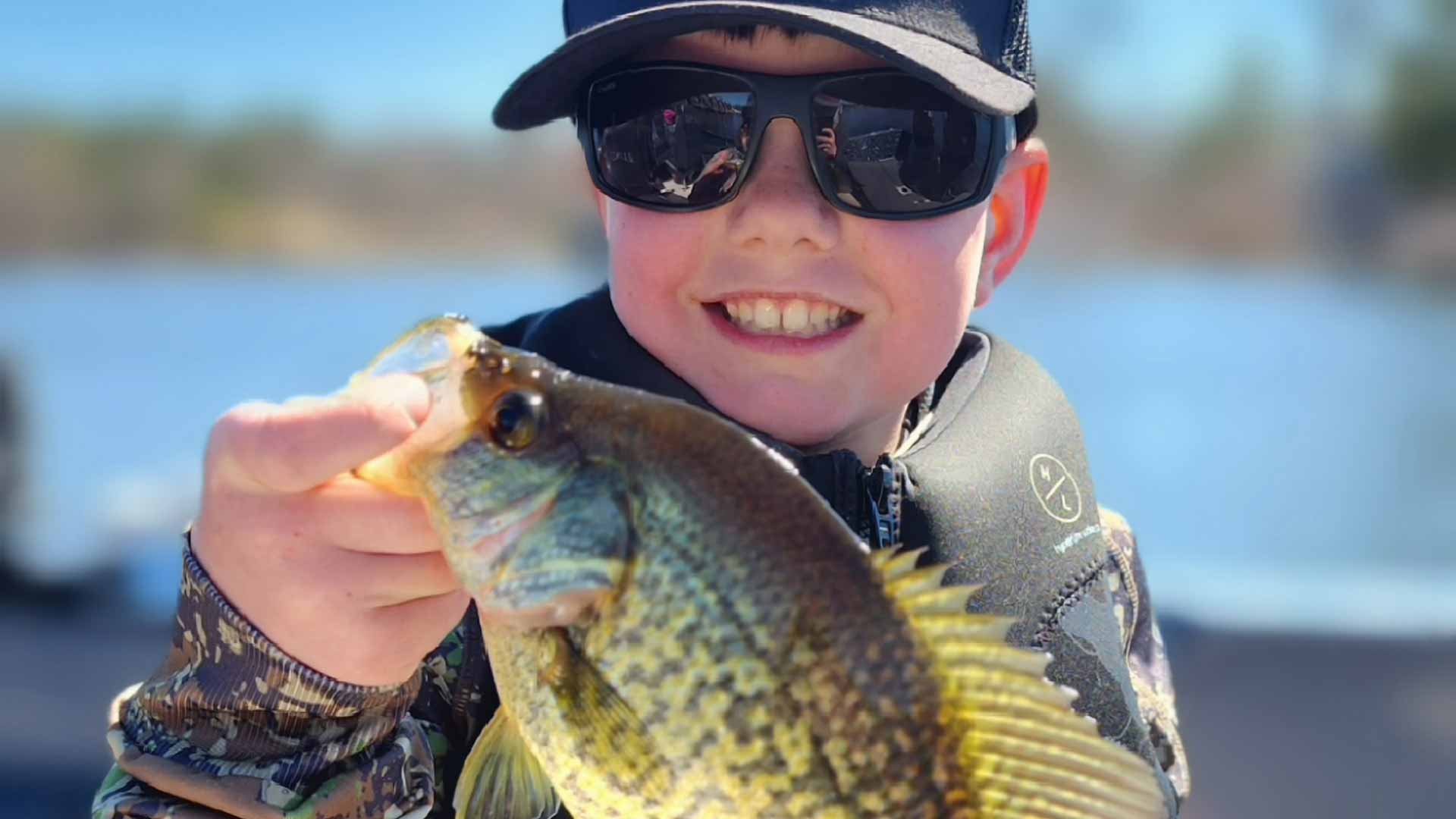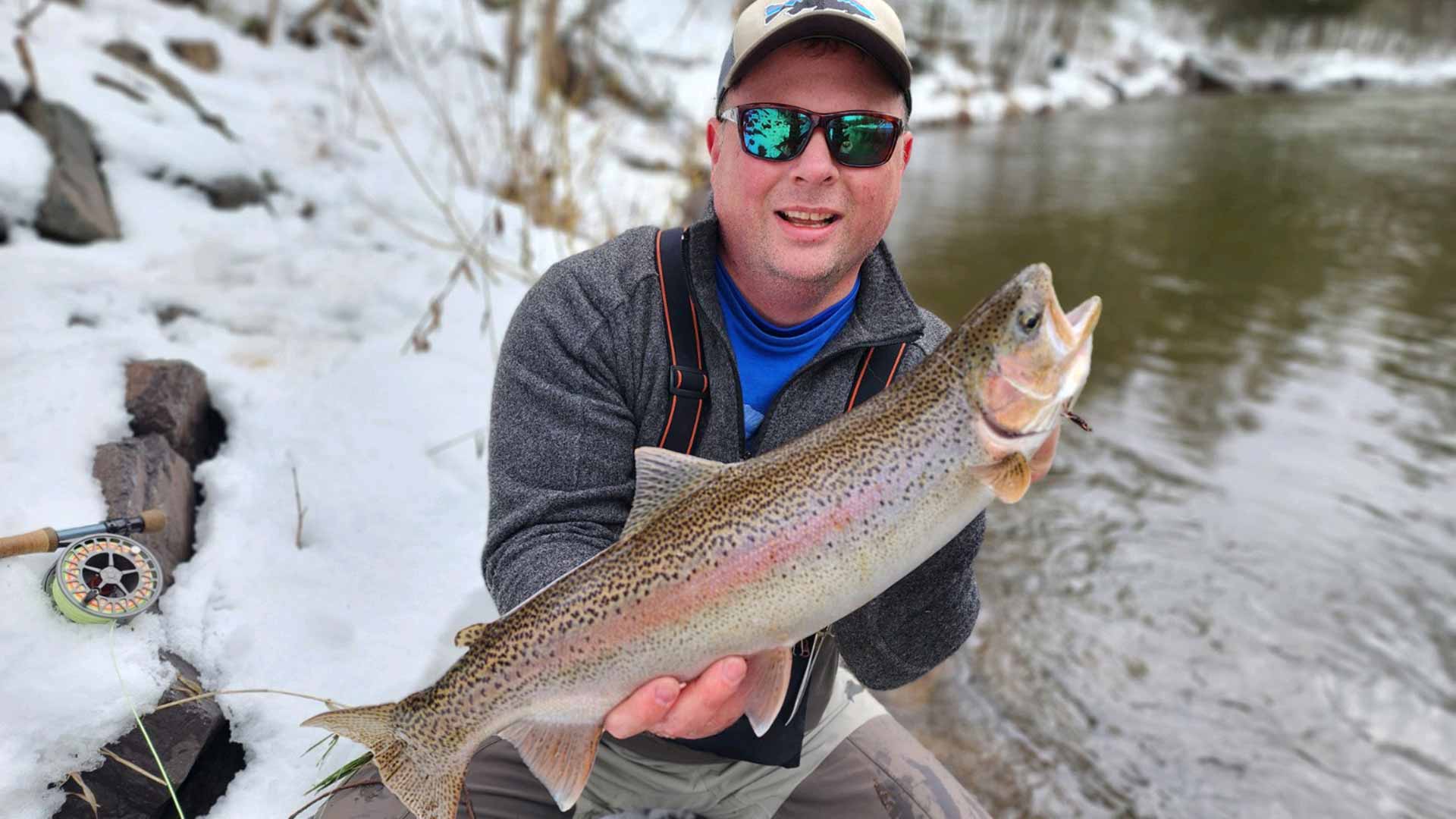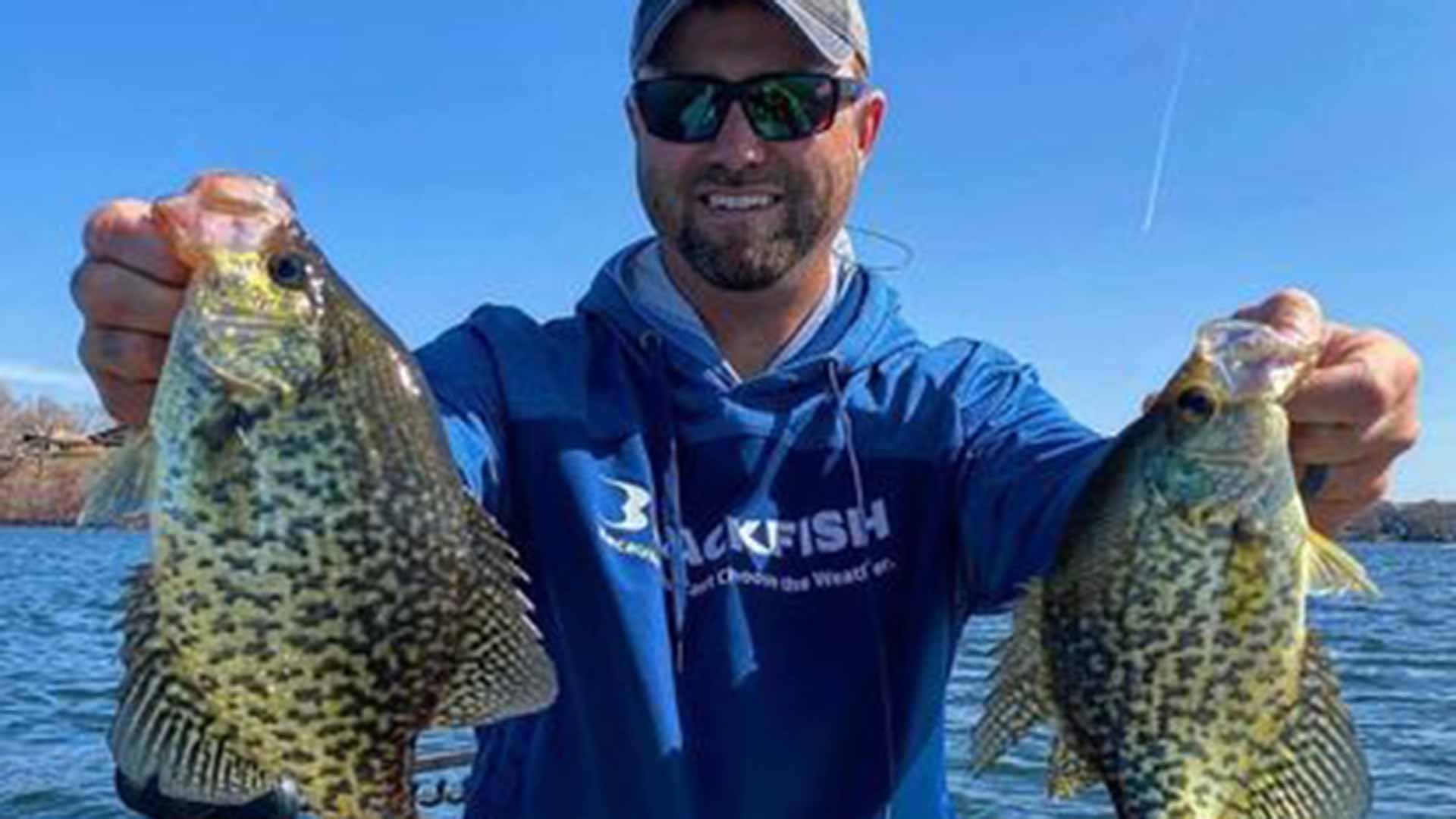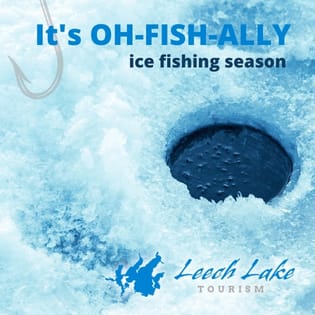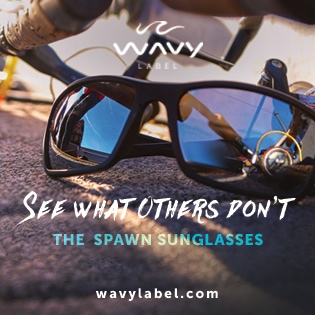This week on the Buzz, we’re bringing in legendary fishing guide, Tony Roach, to talk spring fishing tips and tactics. It’s been a late, late spring here in our neck of the woods, but the ice is melting and the fishing is going to be hot and heavy right from the start.
Spring is a time of new beginnings — for both fish and fishermen.
Following winter’s slumber, the entire food web comes to life again as days get longer and the waters warm: green weeds emerge almost overnight, tiny critters start flittering about, as do schools of minnows, with gamefish following suit.
Pike, panfish, walleye, and bass push into shallow waters where the buffet has finally opened, and the biological urge to spawn has also kicked in.
Warm, shallow bays, coves, creeks, and flats come to life with fish activity. Although dependent on water levels, river fish, too, often push very close to the bank.
This is all good news for anglers, as access to many fish species becomes easier than any other time of the year, and it doesn’t take a big boat to get in on the action.
In fact, sometimes shore anglers have the advantage in spring, whether casting from the bank, a dock, or working waters in waders. Today’s fishing kayaks and small watercraft can also get you into fish-filled places that are nearly impossible to access with a full-size rig.Northern pike are one of the first fish to move shallow in spring, often before the ice has left the main lake.
It’s quite a sight: male and female pike migrating up narrow creeks, their backs often sticking out of the water, like squadrons of submarines slipping into slough-like coves and bays, fully-armed to feed and breed.
You’ve got a shot at giant pike in spring, whether fishing dead bait on bottom, or chunk-and-winding swimbaits or blades.
Not long after the pike procession, the panfish convention comes to town, presenting some of the very best bluegill and crappie action of the entire year. From simple float rigs to pitching tiny plastics, be prepared for lots of bites.
And while easy-pickings panfish used to mean buckets of meat, more anglers are releasing larger fish and practicing selective harvest; good news for the long-term sustainability of panfish waters in our region.Walleye fishing can also get fast and furious. Moving waters that connect lakes and shallow flats to the first break-line are top locations. Jigging live bait or plastics is a springtime staple, but don’t overlook pitching or trolling cranks to find walleye in transition.
And bass? From big green fish to scrappy smallmouth, the getting can be great with fish localized in skinny waters—with fish typically visible to the naked eye.
From power fishing to finesse, there are countless ways to catch springtime bass, depending on their mood. Best to have a few rods on deck – from swim jigs to shallow-running cranks to creatures and wacky rigs, it all adds up to a whole lot of fun.
No matter your favorite species, NOW is the time for some of year’s best angling opportunities.
Spring is a fantastic time for fishing, and in this article, we will explore some of the best fishing spots and techniques for the season. From Ontario to Michigan to Minnesota, there are plenty of opportunities to catch trophy walleye, smallmouth bass, pike, and lake trout. So grab your gear and get ready for some exciting spring fishing!
Hawk Lake Lodge in Ontario
If you’re looking for the best freshwater fishing in North America, look no further than Hawk Lake Lodge in Ontario. This lodge has been a four-time finalist for the best Orvis Lodge in North America. With their cordon bleu crane chefs and 19 private lakes, Hawk Lake Lodge offers an unforgettable fishing experience. Whether you prefer traditional gear or fly fishing, they have you covered.
Lake Vermilion in Minnesota
Lake Vermilion in Minnesota is another great destination for spring fishing. According to the Minnesota Department of Natural Resources, 97 percent of voters surveyed by watercraft inspectors followed Minnesota’s clean drain and dry law, which helps prevent the spread of aquatic invasive species. This is crucial for maintaining the health of the lake and its fish population. Lake Vermilion is known for its abundance of walleye, smallmouth bass, and muskie. Anglers can enjoy fishing from shore or from a boat, and there are plenty of resorts and lodges in the area to accommodate visitors.
Detroit River in Michigan
The Detroit River in Michigan is a hotspot for walleye fishing in the spring. Captain Ben Wolf recommends vertical jigging for walleye in the river. He suggests targeting depths of 15 to 20 feet for larger walleye and 30 to 38 feet for smaller ones. Wolf also recommends using jigs in the mahi-mahi color on an anti-freeze color jig for optimal visibility. The Detroit River offers a red-hot bite for walleye fishing, making it a must-visit destination for anglers.
Green Bay in Wisconsin
Green Bay in Wisconsin is another excellent location for spring walleye fishing. Justin Guykey suggests using rafts and jigs with plastics to target walleye in the mid-40s water temperatures. The rip and rat bite has been particularly successful on Green Bay. Anglers can enjoy both trolling and casting techniques to catch walleye in this area.
Leech Lake in Minnesota
Leech Lake in Minnesota is a popular destination for walleye fishing during the spring opener. Brian Brosdahl recommends seeking active fish in the shallower, warmer areas of the lake. He suggests targeting wind-swept points and gravel areas where the females dump off after spawning. The males provide most of the action and keeper fish. Brosdahl also recommends using watermelon-colored jigs for perch fishing and bobber fishing with leeches in shallower water.
Alexandria Region in Minnesota
The Alexandria region in Minnesota offers a variety of fishing opportunities for walleye and panfish. Josie Guerra suggests targeting shallow bays and areas with moving water for crappie fishing. She recommends using a jig and minnow combination for catching crappies near shore. For walleye fishing, Guerra suggests focusing on shallow areas with rock, gravel, or moving water. She recommends using a jig and minnow combination, with a quarter-ounce or eighth-ounce jig being sufficient. Shallow diving crankbaits are also effective for catching walleye during this time of year.
Lake Oahe in South Dakota
Lake Oahe in South Dakota offers a great shore fishing experience. Chad Schilling reports that while the walleye bite has been slow, catfish action has been good. He suggests fishing in Swan Creek and other areas with reported water temperatures between 40 and 45 degrees. Schilling recommends using cut bait for catfish and suggests that the action is good for those looking to have some fun and catch fish.
In conclusion, spring is an exciting time for fishing, and there are plenty of great destinations to choose from. Whether you’re targeting walleye, smallmouth bass, pike, or panfish, there are opportunities for anglers of all skill levels. Remember to follow local regulations and practice responsible fishing to help preserve the health of our lakes and rivers. So grab your gear and get out on the water for some thrilling spring fishing!
Leech Lake — The BIG FISH Factory
Leech Lake is famous for being one of Minnesota’s premier walleye destinations. But it has much more than just walleyes to offer visiting anglers. Many people love to take advantage of the exceptional crappie and sunfish bite. Big black crappies can be found in the lake’s many wild rice lined bays. And if you’re looking for perch, check out the main lake shallow sand grass flats. Most anglers concentrate their efforts in the five to ten foot range.
Come opener the lake’s relatively-shallow flats, rocks, and points are high-probability spots offering plenty of eaters walleyes and good numbers of larger fish, too. For years Leech lake walleye anglers go-to presentation this time of year has been Shiner minnows, either jigging or rigging. But increasingly, artificials have come into play. Jigs with three or four inch paddle tails or shallow running cranks produce lots of fish. If there’s a good walleye chop this Opener, make sure to try shallow, I mean really shallow. Hungry walleyes will often chase baitfish up in the reeds and shallow rocks. We’re talking less than five feet of water.
Leech’s sleeper bite is definitely its incredible largemouth bass action. And for fans of scrappy bronzebacks, the catch rate has increased in resent years as the population seams to be expanding to new locations.
Looking ahead to the Minnesota Musky Opener on June 2nd, it’s hard to beat Leech for a shot at early season trophies.
Yes, no matter your favorite species, Leech Lake has it all.
Spring Fishing Multi-Species Tackle
It’s spring of the year and fish are heading up into the shallows to gorge on bait and “do their deal”. This provides an excellent opportunity for multi-species anglers to capitalize on a flurry of different bites, using shallow water presentations to cover water quickly and trigger vicious bites.
Lures
– Rapala Original Floater – $7.69
– Rapala Husky Jerk – $5.89
– Rapala Down Deep Husky Jerk – $5.89
– VMC Spin Jig Curl Tail – $2.59
– Northland Thumper Crappie King – $2.99
– Northland Impulse Swim’N Grub – $3.99
– Puddle Jumpers – $3.99
– Northland Rippin’ Shad – $4.99
– Northland Fire-Ball Jig – $4.99
– Northland Sting’r Hook – $2.99
Other
– St. Croix Trumph Rod (007090160) – $89.99
– Daiwa Fuego LT 2500D (101033277) – $99.99
– Northland Bionic Walleye Braid – $12.99
– Sufix 832 Braid – $16.99
– Boomerang Original Snip – $13.99
Jigs, Minnows & Plastics for Spring Fishing Walleye
When it comes to jig fishing, the baits I use are about as diverse as the bodies of water I fish. One of my favorite go-to techniques is pitching a simple swimbait. It’s a dynamite presentation for pitching and ripping in a variety of different conditions, from shallow weeds to deep rocks and everything in between.
Cast it out and work it back to the boat by ripping just before the lure hits the bottom. This strategy works incredibly well for early season walleyes lurking in sparse weed cover.
Everyone knows that livebait gets bit, so why use plastics? The short answer: Efficiency.
If you’re fishing livebait, you’re limited in how your can present the bait. The more you rip, the more likely you’re going to pull the bait off the hook, leaving you with an undesirable presentation. With plastics, you can snap your jig through weeds and fish a lot more aggressively overall. It allows you to cover water more quickly, and you save a bunch of time re-rigging.
However, if you do need to slow down and fish livebait, we recommend using shorter shanked jigs or something with a blade that attracts fish from afar. Simply thread the shiner onto the jig head and work it slowly and methodically back to the boat.
Recommended Baits:
– Slurp! Jig (w/ plastics)
– Impulse Core Swimbait
– Fire-Ball Jig
– Current Cutter Jig
– Whistler Jig

